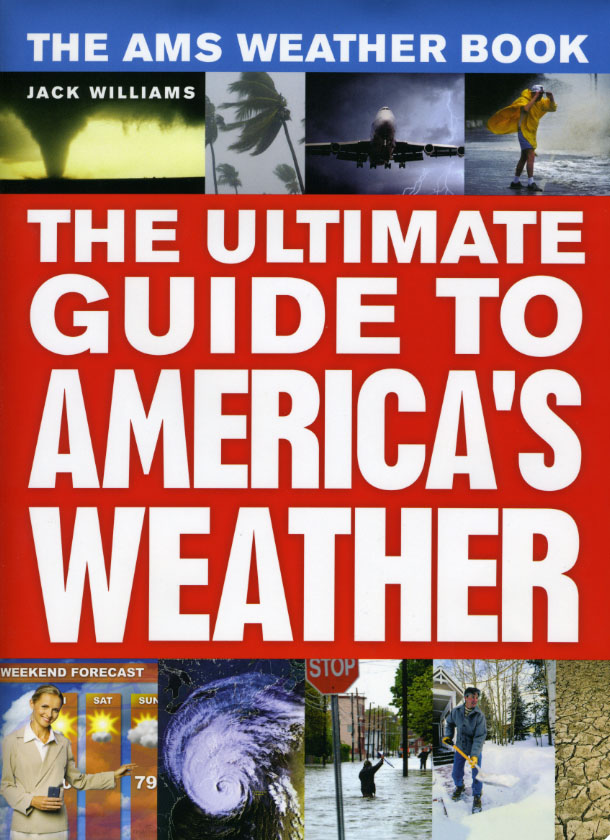Explorations: The Coriolis Force
The AMS Weather Book briefly describes, on pages 55 through 57, the Coriolis force and other forces that cause winds to follow a curved path.
The idea for the small Coriolis force graphic on page 55, in Chapter 3, is from Joseph M. Moran, Weather Studies: Introduction to Atmospheric Science, Third Edition (Boston: The American Meteorological Society, 2006), 206. This book’s discussion of the forces that drive winds, on pages 204–217, is a comprehensive explanation that doesn’t require a strong foundation of mathematics and physics
The AMS Weather Book mentions that more advanced texts give a more complete, mathematical explanation of the Coriolis force and the other forces that cause winds to blow. A good example of such a book, which uses somewhat complex mathematics (a year or more of college-level calculus should make it understandable), is John M. Wallace and Peter V. Hobbs, Atmospheric Science: An Introductory Survey, Second Edition (New York: Academic Press, 2006), 276–279. This book is a classic introductory text for those who plan to major in meteorology or another physical science.
You don’t need to know complex mathematics to understand why the Coriolis force does not cause water to swirl down drains in different directions in the Northern and Southern hemispheres. The best place to begin understanding this is the Bad Coriolis Web page, published by Alistair B. Fraser, of Penn State University.
He even gives step-by-step instructions on how to prove to someone who believes the water-down-the-drain myth that the equator runs through the room you are in, no matter where the room is, using tricks like those stage magicians use.
Fraser’s related Bad Coriolis FAQ is also worth reading. This includes an explanation of why it’s the Coriolis force not effect and a discussion of some of the pitfalls of teaching about the Coriolis force.
Should It Be the Ferrel Force?
In their book, Hurricane Watch: Forecasting the Deadliest Storms on Earth (New York: Vintage, 2001), Dr. Bob Sheets and the author argue, “If science truly had a sense of justice, we should probably speak of the ‘Ferrel force’ instead of the Coriolis force when we talk about the winds” (page 40). This is because, while the French mathematician Gustave–Gaspard Coriolis first worked out the mathematics of the force now named for him in the 1830s, neither he nor anyone else applied his analysis to the atmosphere until the mostly self-taught American meteorologist William Ferrel (1817–91) worked this out and published the results in 1856. As explained in Chapter 5 of The AMS Weather Book, the term Ferrel cell is used for earth’s middle latitude circulation.
While Sheets and the author only briefly mention Ferrel’s role in explaining the atmosphere’s global-scale motions, Gabrielle Walker has an extensive discussion of Ferrel’s life and his important role in meteorology in her An Ocean of Air: Why the Wind Blows and Other Mysteries of the Atmosphere (New York: Harcourt, 2007), 96–109.

